- Home
- Chittorgarh Sightseeing Taxi Tour
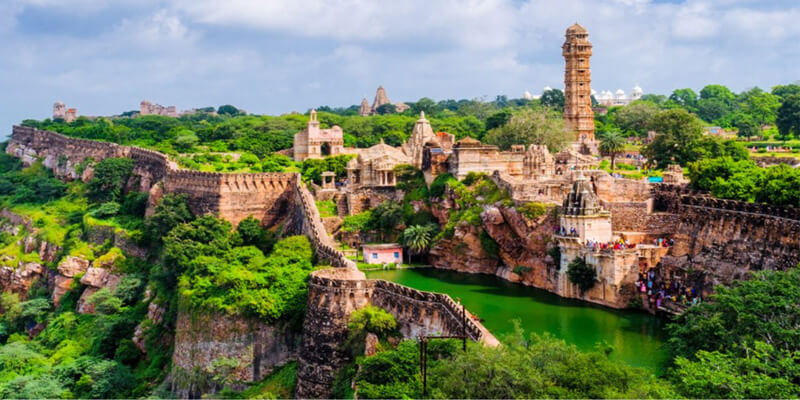
Places To Visit In Chittorgarh In 1 Day By Taxi
Explore the rich history of Chittorgarh hassle-free with Chittorgarh Sightseeing Taxi! Our reliable services ensure a comfortable journey to iconic landmarks like Chittorgarh Fort and Victory Tower. With well-maintained vehicles and knowledgeable drivers, we make your sightseeing experience memorable. Immerse yourself in the grandeur of historical sites and the vibrant culture of Chittorgarh. Book your Chittorgarh adventure with us for a seamless and enjoyable exploration of this historic city.
Chittorgarh Sightseeing Taxi Fare, Distance & Time
Chittorgarh Sightseeing
Included kms & Extra fare
Cab Price
Sedan Sightseeing Taxi
80 kms | 8h 00m (appx.)
80 kms included
Extra fare ₹15/km after 80 kms
₹2000
onwards + parking
- On Time
- Affordable
- Trusted
- Verified Drivers
Suv Sightseeing Taxi
80 kms | 8h 00m (appx.)
80 kms included
Extra fare ₹15/km after 80 kms
₹3500
onwards + parking
- On Time
- Affordable
- Trusted
- Verified Drivers
MUV Sightseeing Taxi
80 kms | 8h 00m (appx.)
80 kms included
Extra fare ₹20/km after 80 kms
₹3500
onwards + parking
- On Time
- Affordable
- Trusted
- Verified Drivers
Chittorgarh Sightseeing Tempo Traveller
Fleet
Fare
Included
Note: Toll & Parking will be Paid by the Customer.
Why Choose Us
Pay to driver
Pay 20% now & rest to driver or pay full amountonline.
No hidden prices
Inclusive of GST, state taxes and tolls
No surge pricing, no waiting
Same rate regardless of cab availability, no queues
No hidden prices
Inclusive of GST, state taxes and tolls
Chittorgarh Sightseeing Places | Places to Visit in Chittorgarh
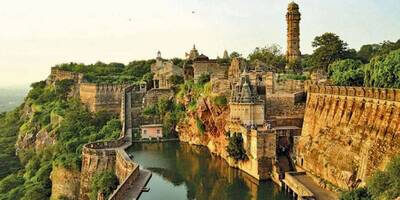
Chittorgarh Fort, situated in the city of Chittorgarh, Rajasthan, is a colossal citadel that echoes the tales of valor, sacrifice, and royal splendor. Built in the 7th century by the Maurya dynasty, the fort stands as a testament to the Rajputana glory. Its intricate architecture, imposing gates, and massive towers tell stories of Chittorgarh's rich history. The fort has witnessed three major sieges, including the famous Siege of 1567, showcasing the Rajput spirit of resistance against invaders. The Vijay Stambh (Tower of Victory) and Kirti Stambh (Tower of Fame) within the fort complex are iconic structures, adorned with detailed carvings. The Padmini Palace, where the legendary tale of Rani Padmini unfolded, adds a touch of romance to the historical narrative. The stunning views of the surrounding countryside from the fort ramparts and the serene Gaumukh Reservoir within the fort compound enhance the overall experience. Chittorgarh Fort, a UNESCO World Heritage Site, stands as a living testament to the valor and heritage of Rajasthan's Rajput rulers.
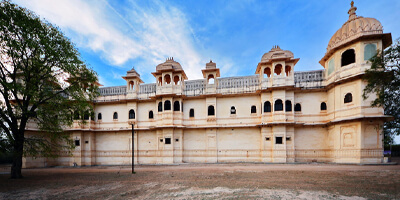
Fateh Prakash Palace in Chittorgarh stands as a testament to the rich history and regal grandeur of the region. Built during the 19th century by Maharana Fateh Singh, it reflects a perfect blend of Rajput and Mughal architectural styles. This magnificent palace, also known as the Fateh Prakash Mahal, served as the residence of the rulers of Mewar during their visits to Chittorgarh. The palace showcases intricate designs, beautiful frescoes, and exquisite mirror work. Today, it is part of the heritage hotels in Chittorgarh, offering visitors an opportunity to experience the royal lifestyle. The palace provides panoramic views of the Chittorgarh Fort and the surrounding landscapes, adding to its allure. Exploring Fateh Prakash Palace is like stepping back in time, immersing oneself in the opulence and grandeur of Rajasthan's royal history.
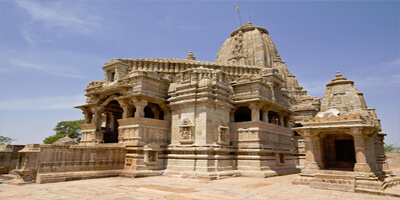
The Kalika Mata Temple in Chittorgarh is a sacred gem steeped in history and spirituality. Dedicated to Goddess Kali, this ancient temple dates back to the 8th century and holds immense religious significance. Legend has it that the temple was established by Rana Lakha, the ruler of Mewar, to seek the goddess's blessings before battles. The temple's architecture showcases intricate carvings and is a blend of Rajput and Mughal styles. Located on the top of the Chittorgarh Fort, the temple provides panoramic views of the surrounding landscapes. Pilgrims and tourists alike visit this holy site to marvel at its historical grandeur and seek divine blessings. The temple is an integral part of Chittorgarh's cultural heritage and stands as a testimony to the city's rich past.
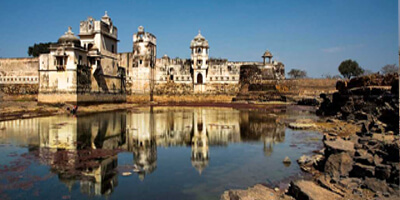
Padmini's Palace, situated within the historic Chittorgarh Fort in Rajasthan, holds a rich tapestry of history and legends. Built during the 13th century, this palace is named after Queen Padmini, known for her beauty and valor. The palace is renowned for its strategic location, providing panoramic views of the surroundings, including the romantic Padmini Pond. The palace gained prominence during the legendary tale of Rani Padmini and Alauddin Khilji, a story of love, sacrifice, and valor deeply embedded in Rajasthani folklore. The architecture reflects Rajput style with delicate arches, water channels, and ornate detailing. The palace complex also includes the Jal Mahal, a charming water pavilion. Visiting Padmini's Palace offers not just a historical insight but also a journey into the tales of love and bravery that echo through the corridors of Chittorgarh Fort.
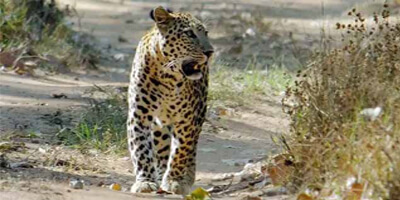
Bhainsrodgarh Wildlife Sanctuary is a haven for nature lovers and wildlife enthusiasts. Established with the aim of conserving the rich biodiversity of the region, this sanctuary is a testament to the commitment to environmental preservation. The sanctuary boasts a history dating back to the era of the princely state of Bhainsrorgarh, reflecting the harmonious coexistence of nature and heritage. Visitors can explore a diverse range of flora and fauna, including rare and endangered species. The Chambal River, flowing through the sanctuary, adds to its picturesque charm. As you traverse the sanctuary, you might encounter various species of deer, antelopes, and a myriad of birdlife. The historic Bhainsrorgarh Fort, standing majestically nearby, adds a touch of cultural richness to the sanctuary experience. A visit to the Bhainsrodgarh Wildlife Sanctuary promises not just a glimpse of nature's wonders but also a step back in time to appreciate the intersection of history and ecology.
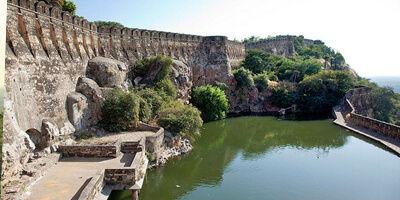
The Gaumukh Reservoir in Chittorgarh holds historical significance and is an integral part of the formidable Chittorgarh Fort. According to legend, this reservoir, shaped like a cow's mouth (Gaumukh in Hindi), is believed to have been the water source where Maharana Pratap's loyal steed, Chetak, quenched its thirst during the historic Battle of Haldighati. It symbolizes the resilience and resourcefulness of the Rajput warriors. Surrounded by the grandeur of Chittorgarh Fort, the Gaumukh Reservoir provides a serene atmosphere, attracting visitors with its cultural and historical importance. Exploring the Chittorgarh Fort, one of the largest forts in India, reveals its numerous palaces, temples, and gates, each narrating tales of valor and honor. The Vijay Stambh (Victory Tower) and Kirti Stambh (Tower of Fame) are iconic structures within the fort, offering breathtaking views of the surrounding landscape. The Gaumukh Reservoir stands as a testament to Chittorgarh's rich history and its enduring connection to the heroic tales of the Rajput warriors.
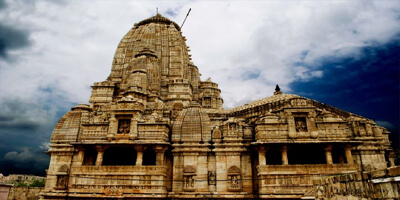
The Meera Temple in Chittorgarh is a revered shrine dedicated to the legendary poet-saint Meerabai. Constructed in the 16th century, this temple holds historical significance as it commemorates the devotion of Meerabai towards Lord Krishna. The temple is adorned with intricate carvings and sculptures that narrate the tales of Meerabai's unwavering faith. It stands within the Chittorgarh Fort, a UNESCO World Heritage Site, adding to its cultural importance. Visitors can witness the sanctum sanctorum where Meerabai is believed to have spent her hours in divine devotion. The temple's architecture reflects the Rajput style, with its detailed embellishments and artistic expressions. The Meera Temple serves as a pilgrimage site and offers a serene atmosphere for spiritual contemplation. Its location within the historic Chittorgarh Fort makes it an integral part of the city's rich heritage, inviting both history enthusiasts and devotees to explore its cultural treasures.
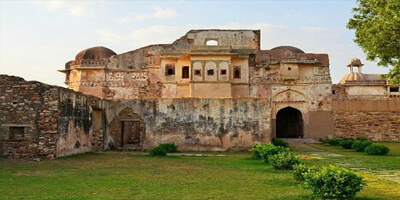
Ratan Singh Palace in Chittorgarh, Rajasthan, is a historical marvel that echoes tales of valor and resilience. Named after Maharana Ratan Singh, this palace is part of the Chittorgarh Fort complex, Constructed in the 15th century, the palace served as the residence of Maharana Ratan Singh, who played a significant role in the history of Chittorgarh. The palace is characterized by its intricate architecture, featuring Rajput and Mughal design elements.
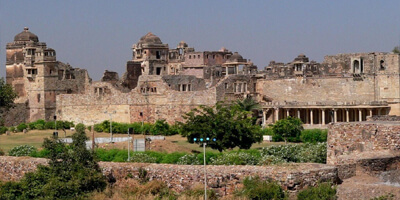
Rana Kumbha Palace in Chittorgarh, Rajasthan, stands as a testament to the rich history and architectural brilliance of the region. Built in the 15th century by Rana Kumbha, the ruler of Mewar, the palace served as a royal residence. The palace witnessed significant historical events, including the birth of the legendary Maharana Udai Singh, founder of Udaipur. The palace is a magnificent structure with intricate carvings, arched doorways, and balconies showcasing Rajput architectural finesse. It also houses the Kalika Mata Temple, dedicated to the mother goddess. Exploring Rana Kumbha Palace offers a captivating journey through the annals of Rajput history, with stunning views of Chittorgarh Fort and the surrounding landscape. The palace remains a symbol of the valor and grandeur of the Mewar dynasty, attracting history enthusiasts and tourists alike.
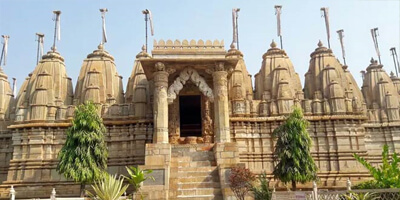
Sathis Deori Temple, situated in Chittorgarh, Rajasthan, is a remarkable testament to the region's rich history and architectural prowess. Built in the 8th century, the temple is dedicated to Lord Shiva and is renowned for its intricate carvings and ancient design. The temple is believed to have been constructed during the reign of Mewar's ruler, Bappa Rawal. Its name, Sathis Deori, is derived from the seven sanctuaries it originally had. Although time and natural elements have taken their toll, the temple still stands as a marvel, showcasing the Chittorgarh style of architecture. Visitors can explore the remnants of the sanctuaries, adorned with sculptures depicting various mythological themes. Sathis Deori Temple provides a captivating glimpse into Chittorgarh's cultural and religious heritage, making it a must-visit for history enthusiasts and those seeking spiritual exploration amidst ancient ruins.
Taxi Service form Chittorgarh to Other Cities
- Jaipur
- Kota
- Bikaner
- Bhiwadi
- Udaipur
- Ajmer
- Bhilwara
- Alwar
- Sikar
- Jodhpur
- Bharatpur
- Pali
- Sri Ganganagar
- Beawar
- Baran
- Tonk
- Dhaulpur
- Kishangarh
- Hanumangarh
- Dhaulpur
- Dungarpur
- Pratapgarh
- Kerala
- Rajasthan
- Goa
- Punjab
- Himachal Pradesh
- Uttar Pradesh
- Gujarat
- Jammu and Kashmir
- Karnataka
- West Bengal
About Chittorgarh
Chittorgarh, a city in Rajasthan, India, is a living testament to the valor, chivalry, and rich history of the Rajputana kingdom. The city is dominated by the imposing Chittorgarh Fort, one of the largest forts in India, built in the 7th century by the Maurya dynasty. This historic fort witnessed numerous battles and holds iconic structures like the Vijay Stambha and Kirti Stambha, symbolic of Rajput pride and courage. The legendary tales of Rani Padmini and Rana Kumbha are intertwined with the city’s history, adding a romantic and heroic touch to its narrative. The ancient Meera Temple and the intricately carved Kumbha Shyam Temple are significant religious sites. The bustling market of Chittorgarh offers a glimpse of local life, and the Gaumukh Reservoir, believed to have been a water source for the fort, provides a serene retreat. Chittorgarh stands as a living museum, inviting visitors to explore its forts, temples, and lakes while immersing themselves in the tales of its glorious past.
Faq's
Tours extending beyond the booked time may incur additional charges, so it’s advisable to discuss extensions with the driver during the tour.
You can book a Chittorgarh Sightseeing Taxi online through our website or by contacting our customer support.
Yes, our drivers are well-informed about Chittorgarh’s tourist spots and can provide you with valuable information during your tour.
We offer a range of vehicles, including sedans, SUVs, and vans, to accommodate different group sizes and preferences.
Our tours cover major attractions like Chittorgarh Fort, Vijay Stambha, Kirti Stambha, Meera Temple, and more. You can customize your itinerary.
Yes, the tour price typically includes fuel, parking fees, and driver charges. There are no hidden costs.
Absolutely! You can customize your itinerary based on your interests. Inform us about your preferences during the booking process.
The duration of your tour can vary, but there is usually a minimum booking duration. You can discuss the specifics when making your reservation.
Yes, we offer both half-day and full-day sightseeing tours to accommodate your schedule.
Taxi Service from Jaipur
- Jaipur To Ajmer Taxi
- Jaipur To Bhangarh Taxi
- Jaipur To Ranthambore Cab
- Jaipur To Jodhpur Taxi
- Jaipur To Kota Taxi
- Jaipur To Bikaner Taxi
- Jaipur To Udaipur Taxi
- Jaipur To Bhilwara Taxi
- Jaipur to Pushkar Cab
- Jaipur to Alwar Taxi
- Jaipur to Bharatpur Taxi
- Jaipur to Sikar Cab
- Jaipur to Kishangarh Taxi
- Jaipur to Khatu Shyam Ji Taxi
- Jaipur to Salasar Balaji Cab
- Jaipur to Mehandipur Balaji Cab
- Jaipur to Agra Taxi
- Jaipur to Delhi Taxi
Rajasthan Taxi Service
- Taxi Service in Jaipur
- Jodhpur Taxi Booking
- Best Taxi Service in Udaipur
- Taxi Service in Kota
- Taxi Service in Pushkar
- Taxi Service in Ajmer
- Taxi Service In Alwar
- Taxi Service in Ranthambore
- Kishangarh Taxi Service
- Taxi Service in Sikar
- Taxi Service in Bikaner
- Taxi Service in Bharatpur
- Taxi Service in Jaisalmer
- Bhilwara Taxi
- Taxi Service in Sawai Madhopur
Rajasthan Sightseeing Taxi Service
- Jaipur Sightseeing Taxi
- Jodhpur Sightseeing Taxi
- Udaipur Sightseeing Taxi
- Jaisalmer Sightseeing Taxi
- Bikaner City Tour
- Pushkar Sightseeing Tour Taxi
- Ajmer Sightseeing Taxi
- Ranthambore Sightseeing Taxi Tour Package
- Mount Abu Sightseeing Taxi
- Bharatpur Sightseeing Tour Taxi By Trusted Travel Agency
- Chittorgarh Sightseeing Taxi Tour
Rajasthan Tour Agency
- Tour Agencies In Jaipur
- Tour And Travels In Sikar
- Tour And Travels In Chittorgarh
- Tour Operators In Kota
- Mount Abu Travel Agency
- Rajasthan Travel Agency
- Bharatpur Travel Agency
- Tour Operator In Ajmer
- Bikaner Travel Agency
- Tour Operator In Jaisalmer
- Tour Operator In Jodhpur
- Tour Agency In Udaipur
- Tour Operator In Agra
- Travel Agency In Sawai Madhopur
Tours My India offering a wide range of services including one-way cabs, outstation cabs, round trip cabs, airport pickup and drop, and enticing tour packages.
Quick Links
Contact Us
- D-540, Vasundhara Kutumb Flats, Beelwa Jaipur - 302022
- © 2023 Tours My India | All Rights Reserved
- Powered By: MaxFizz




